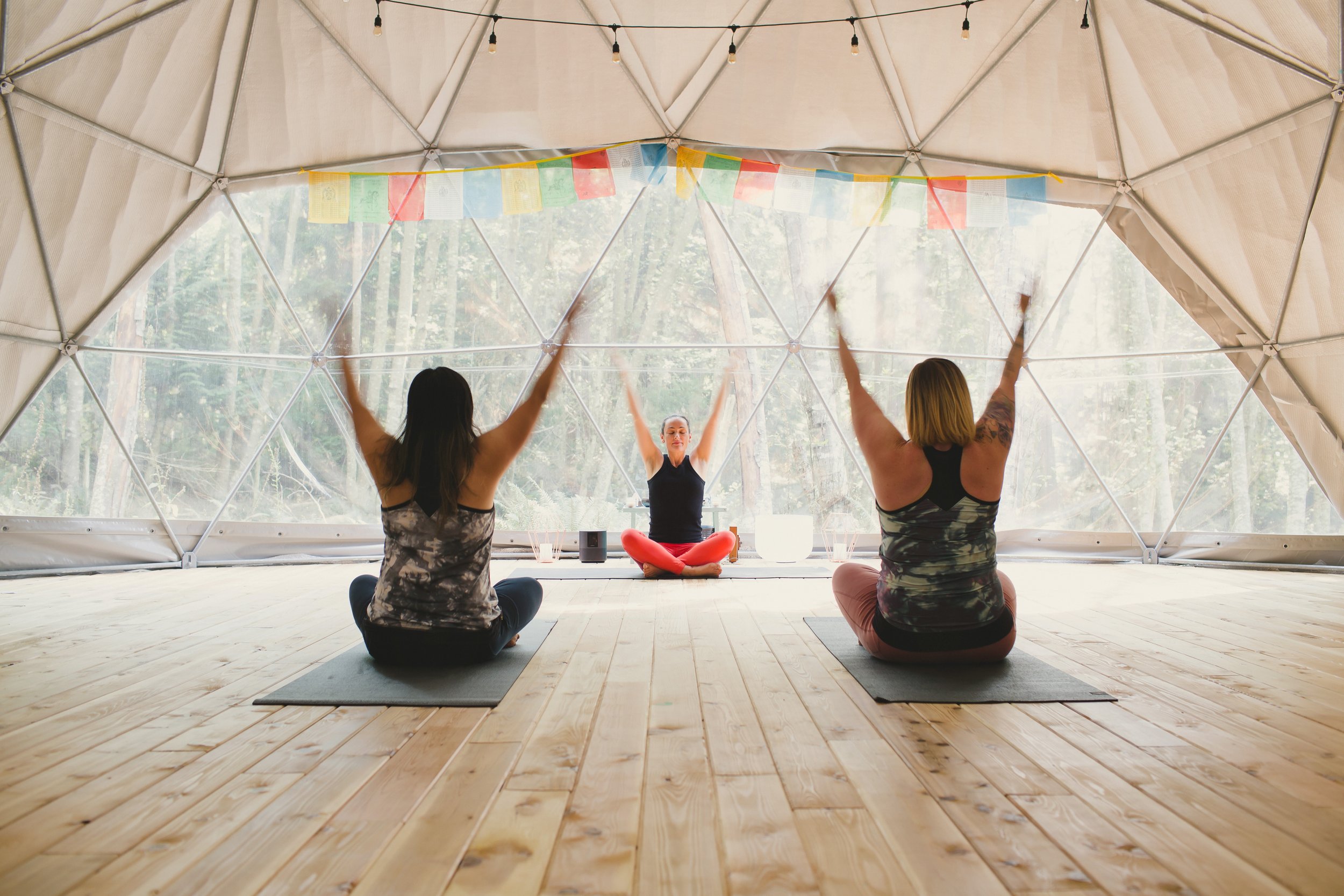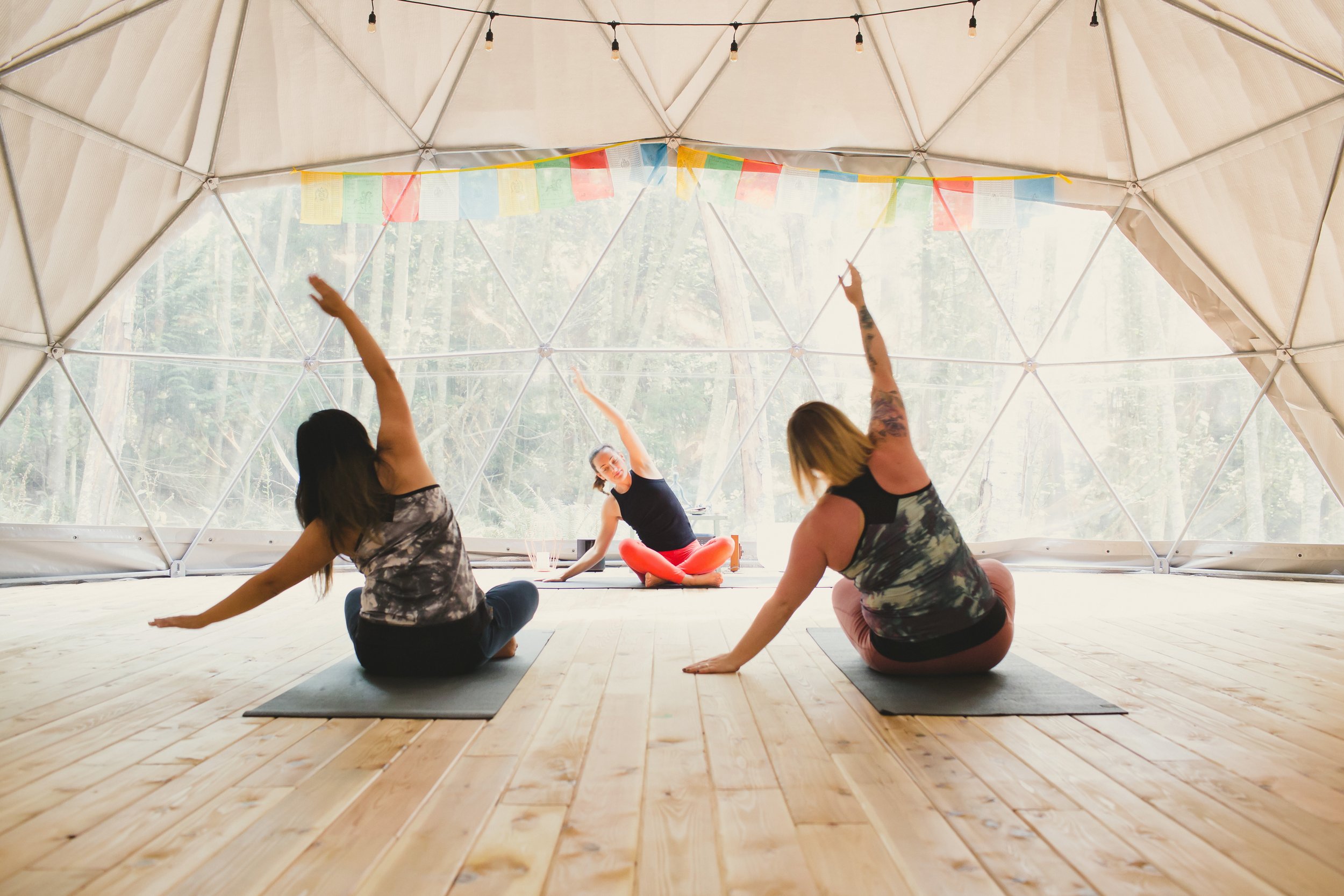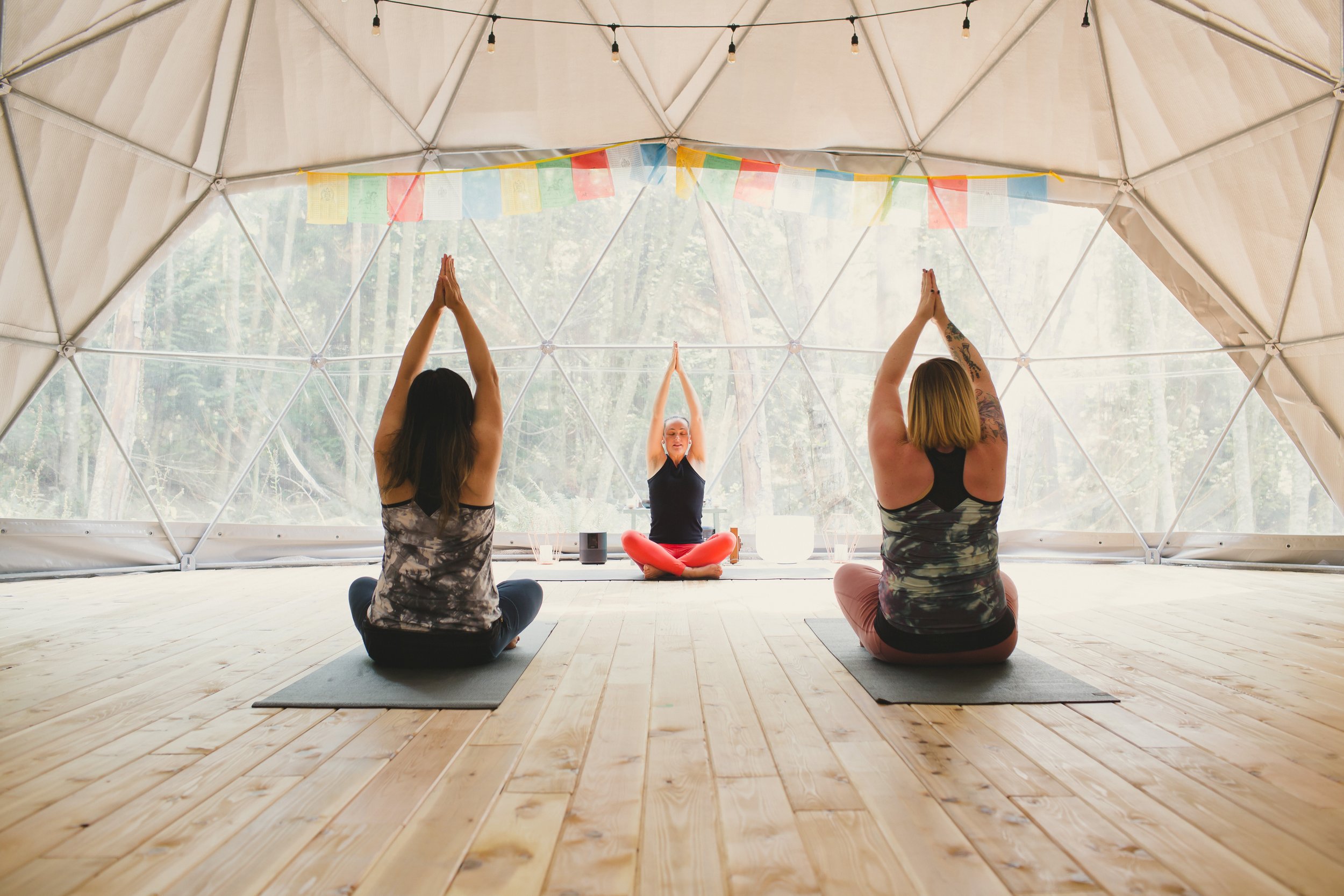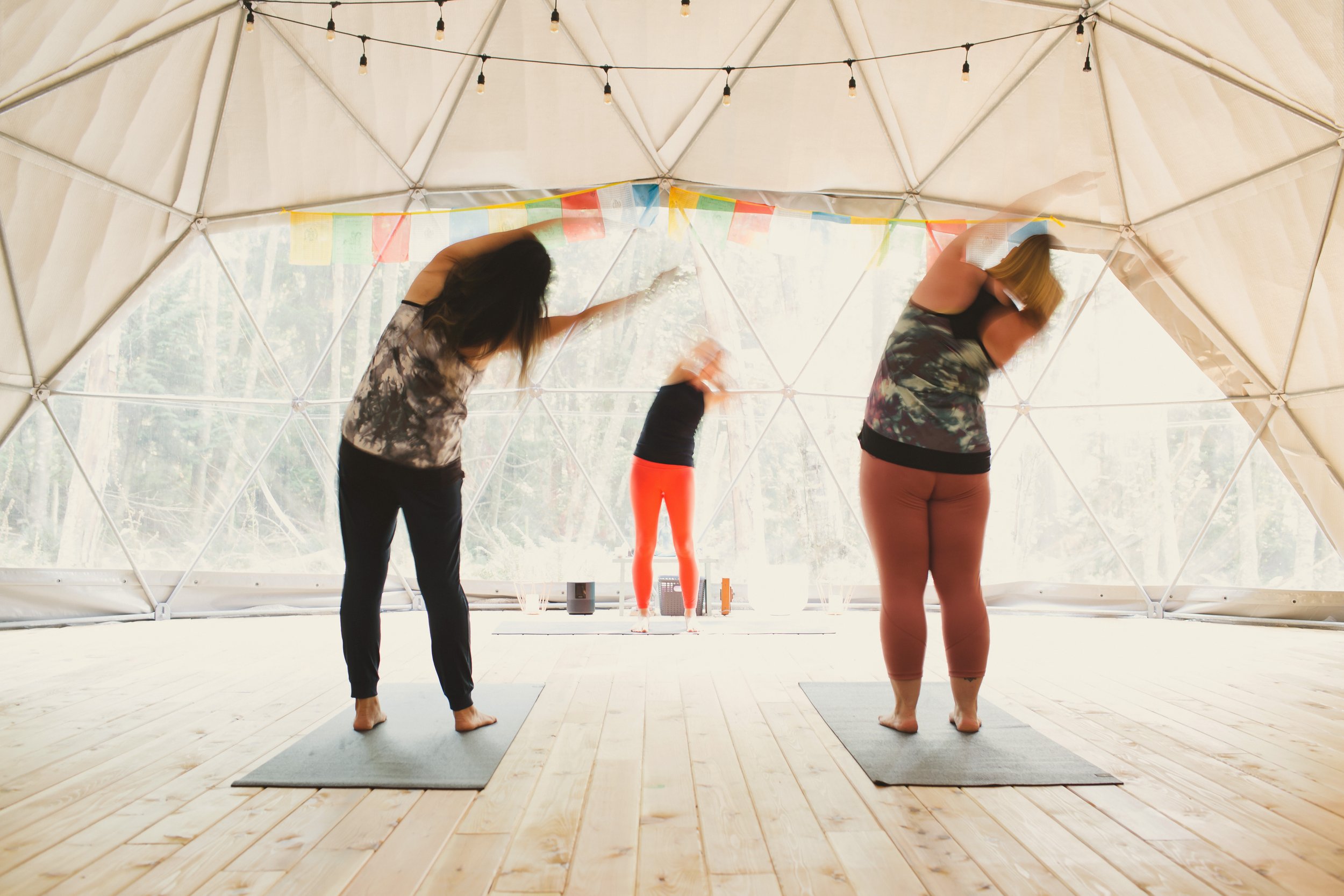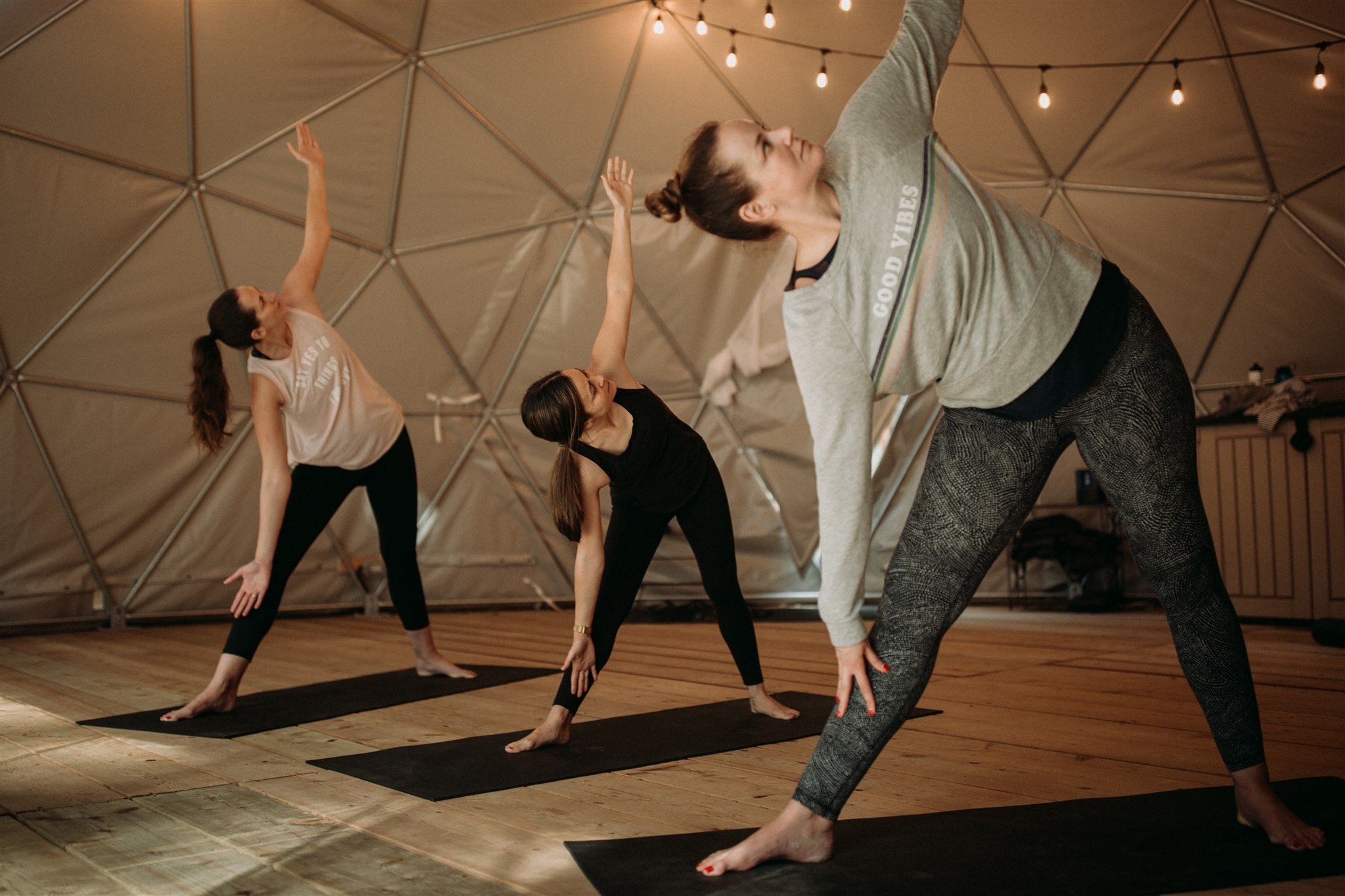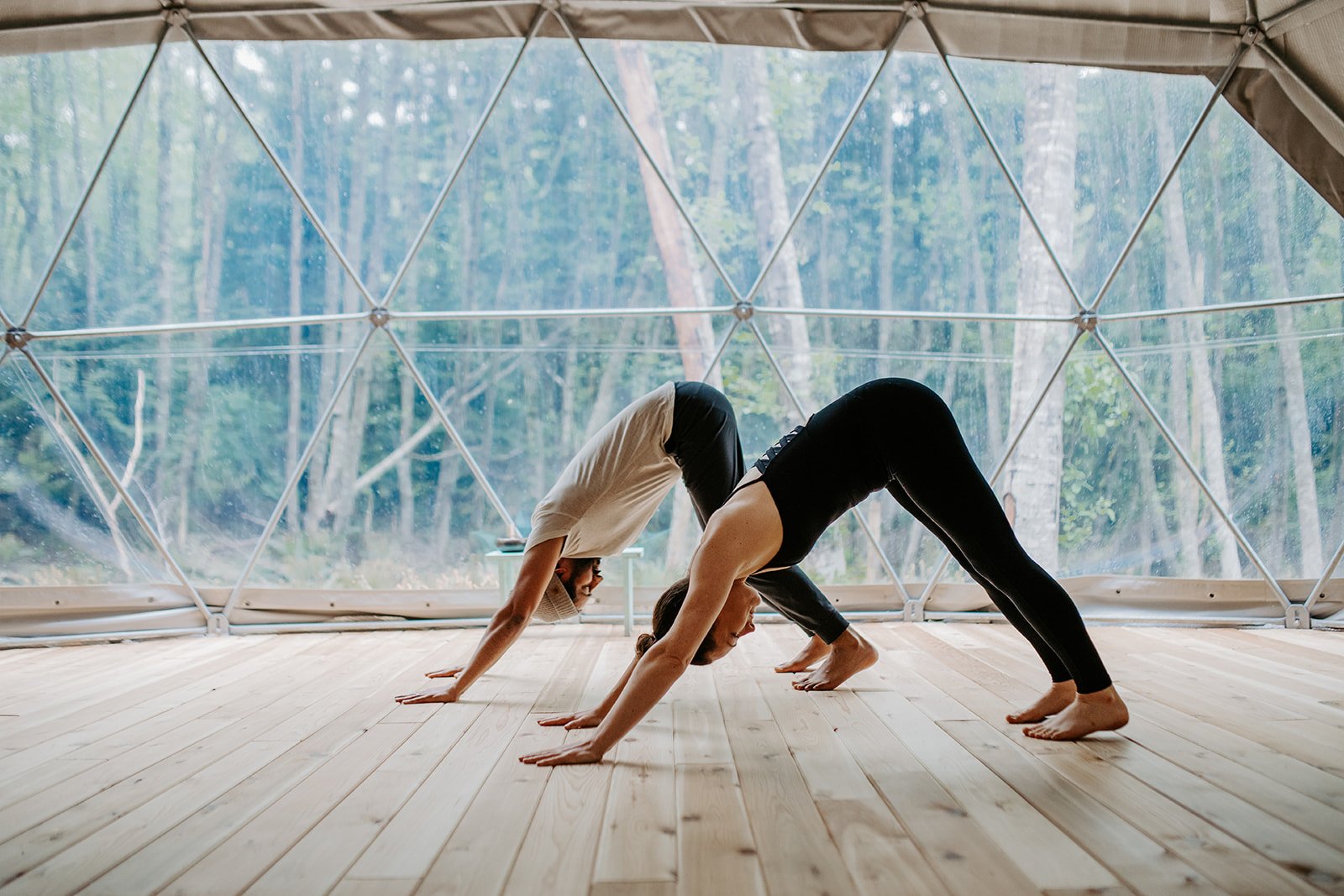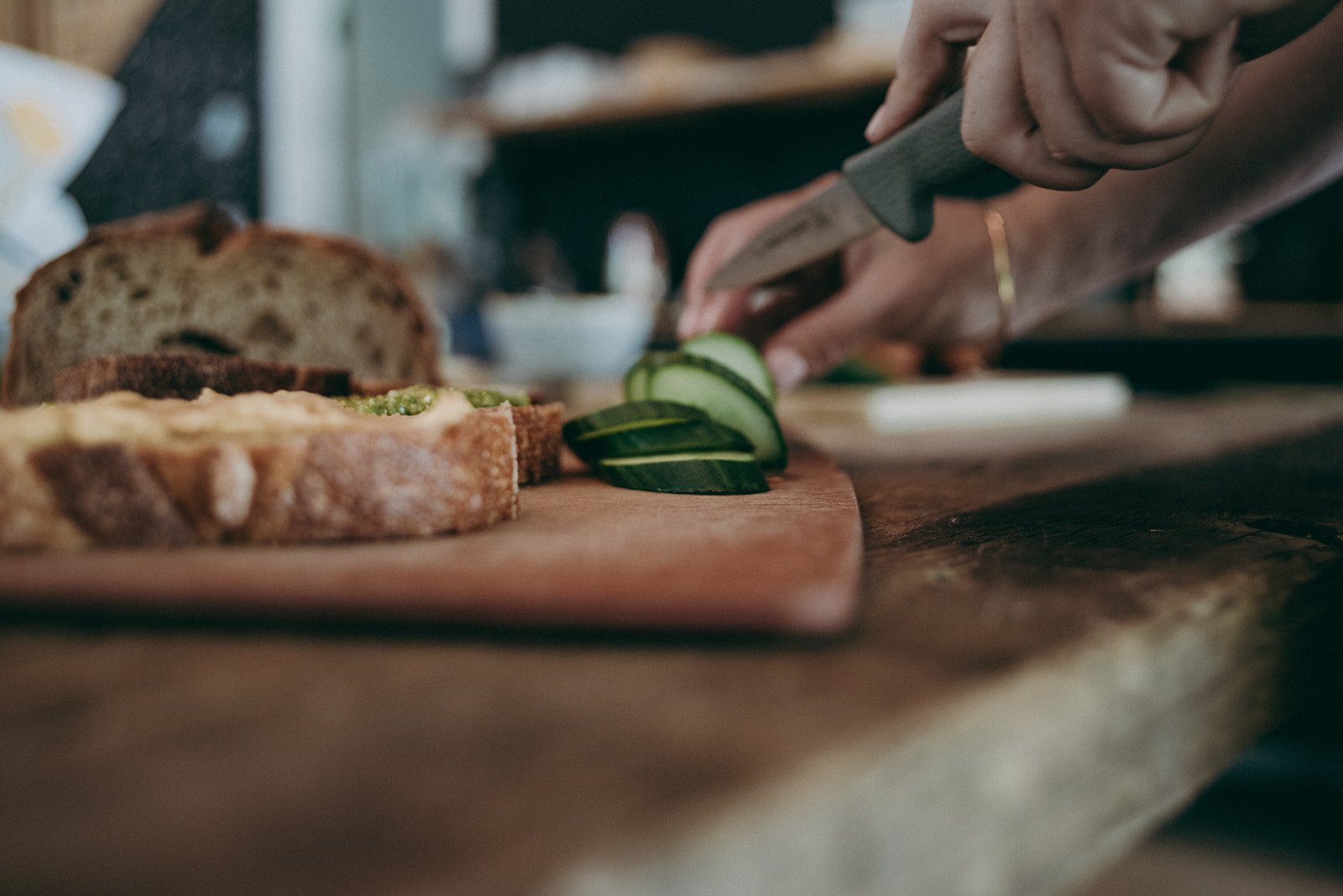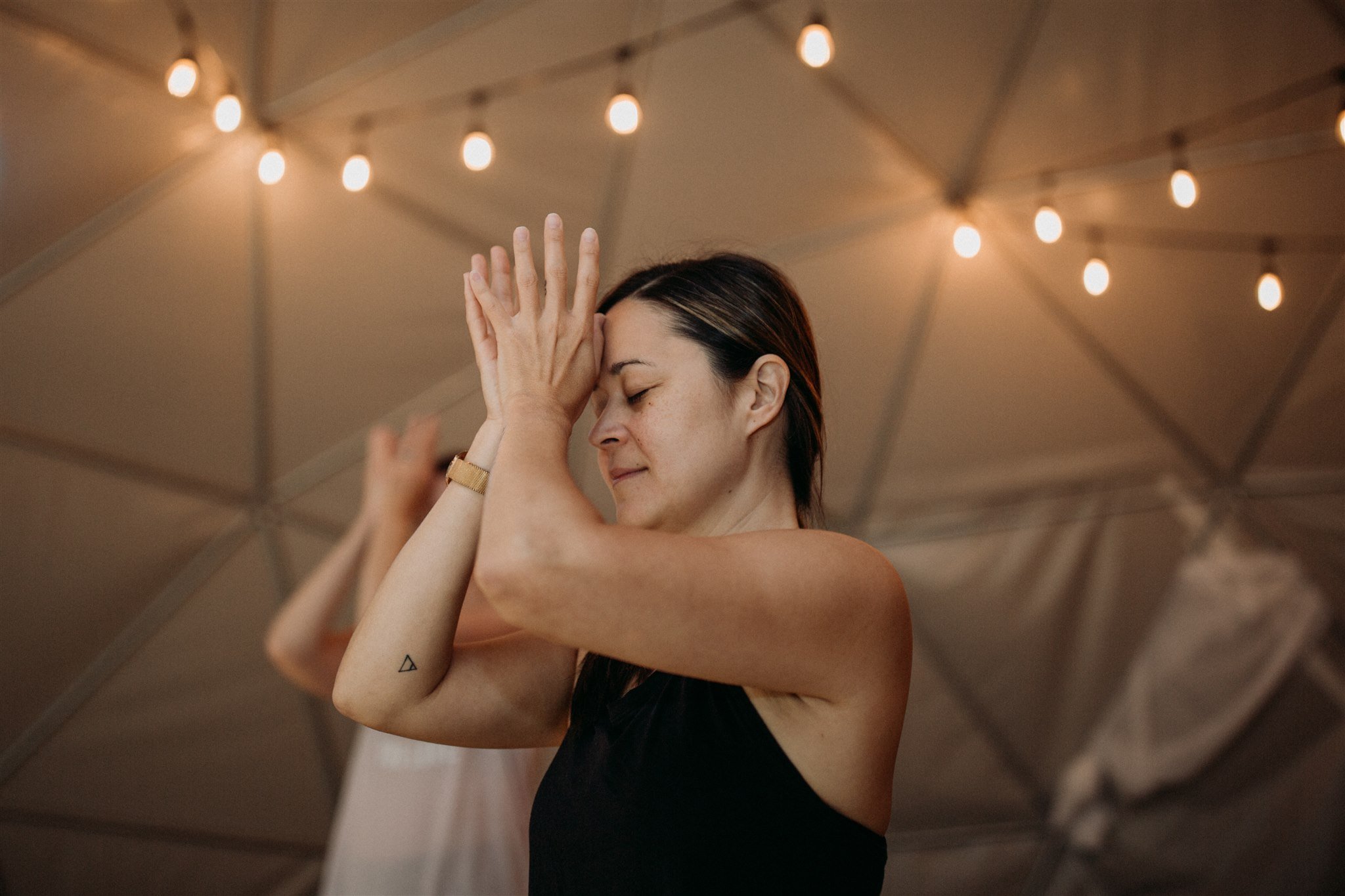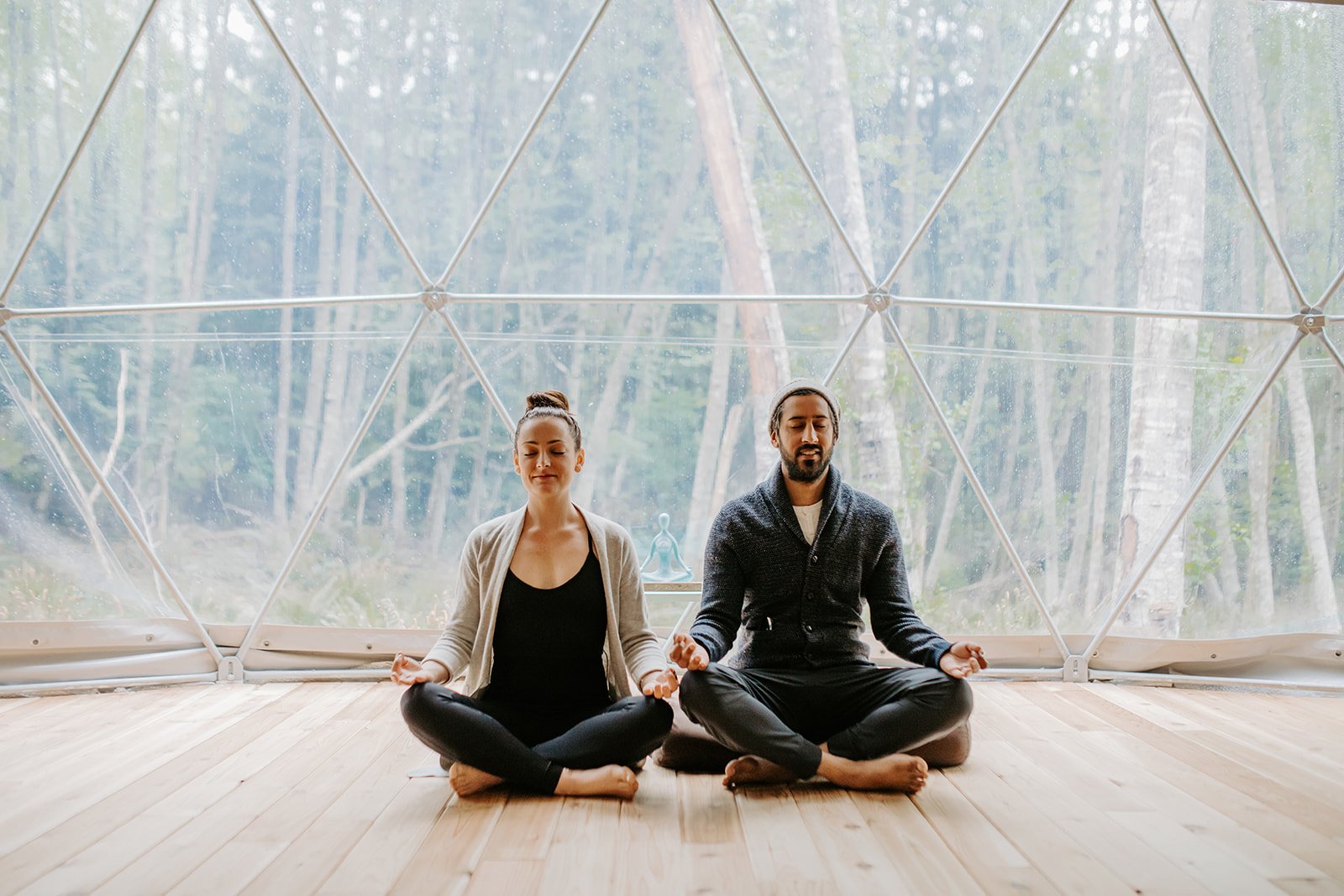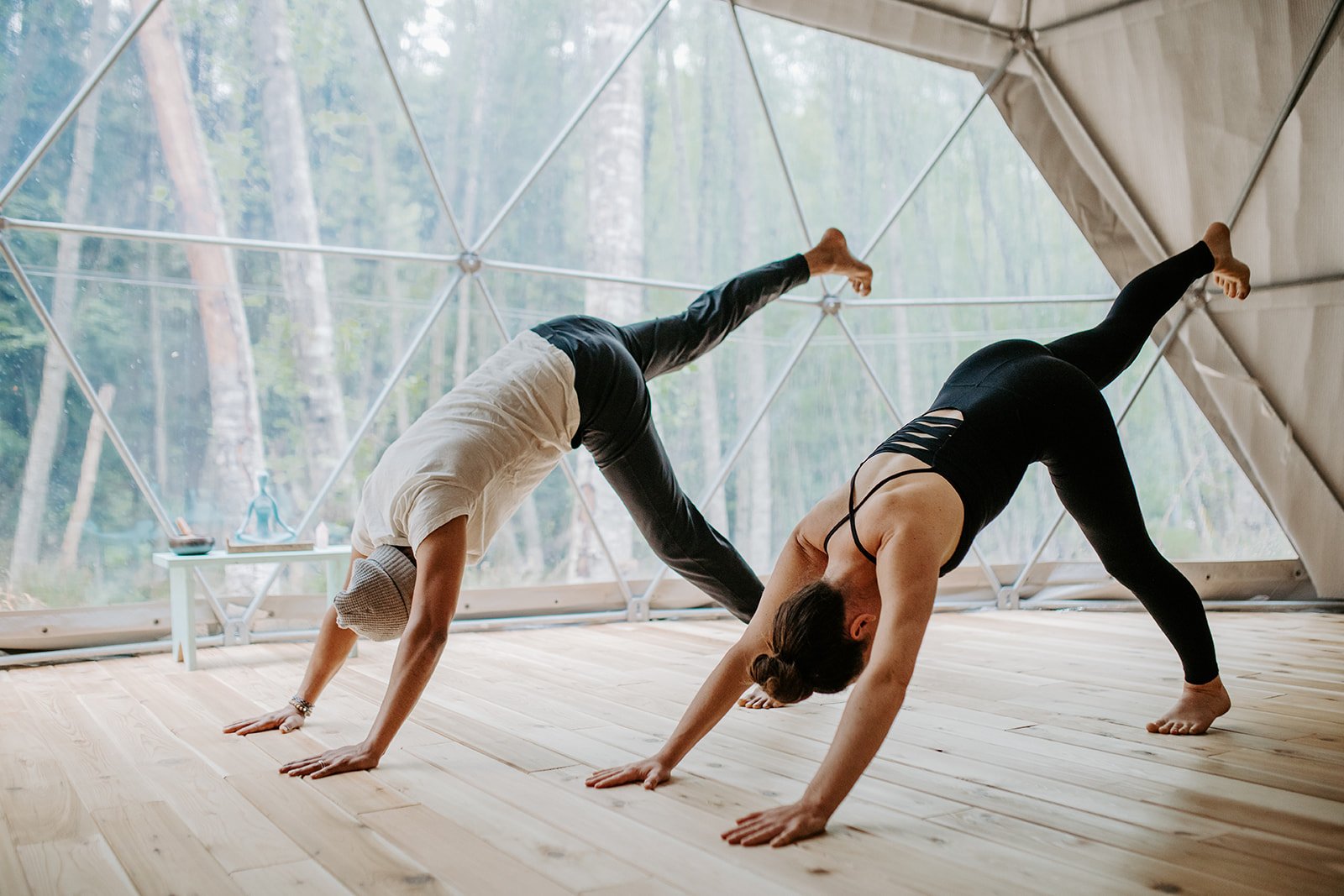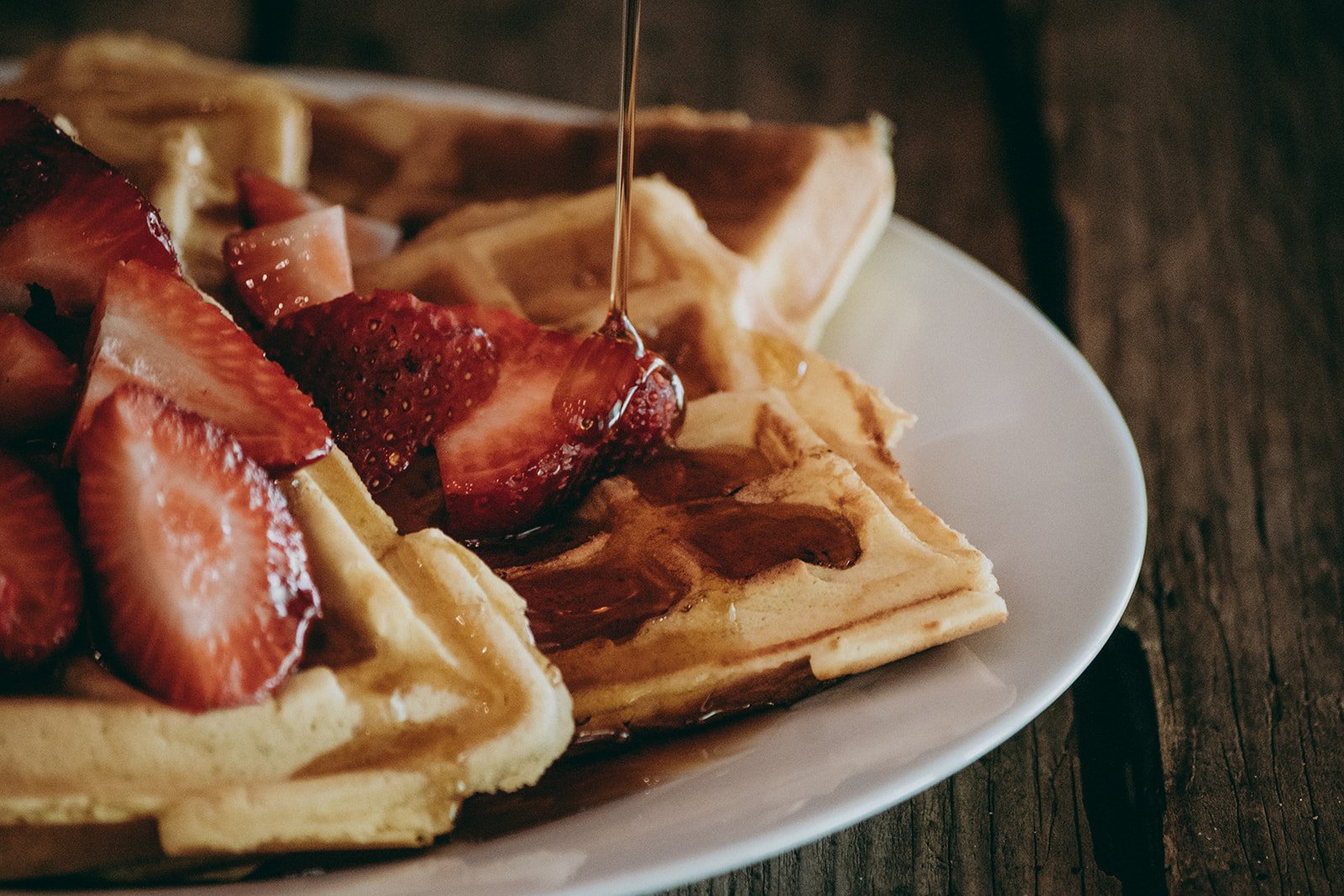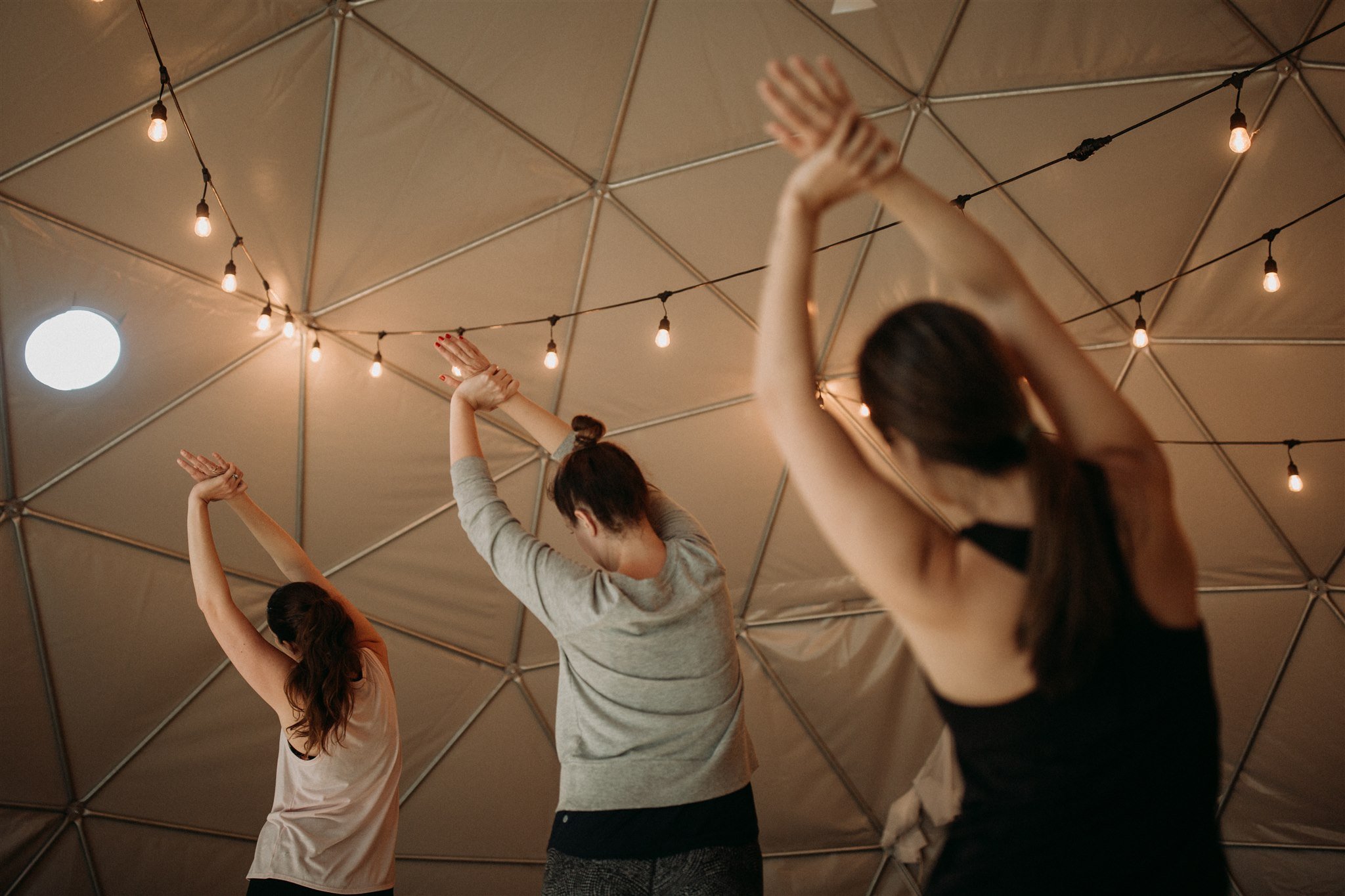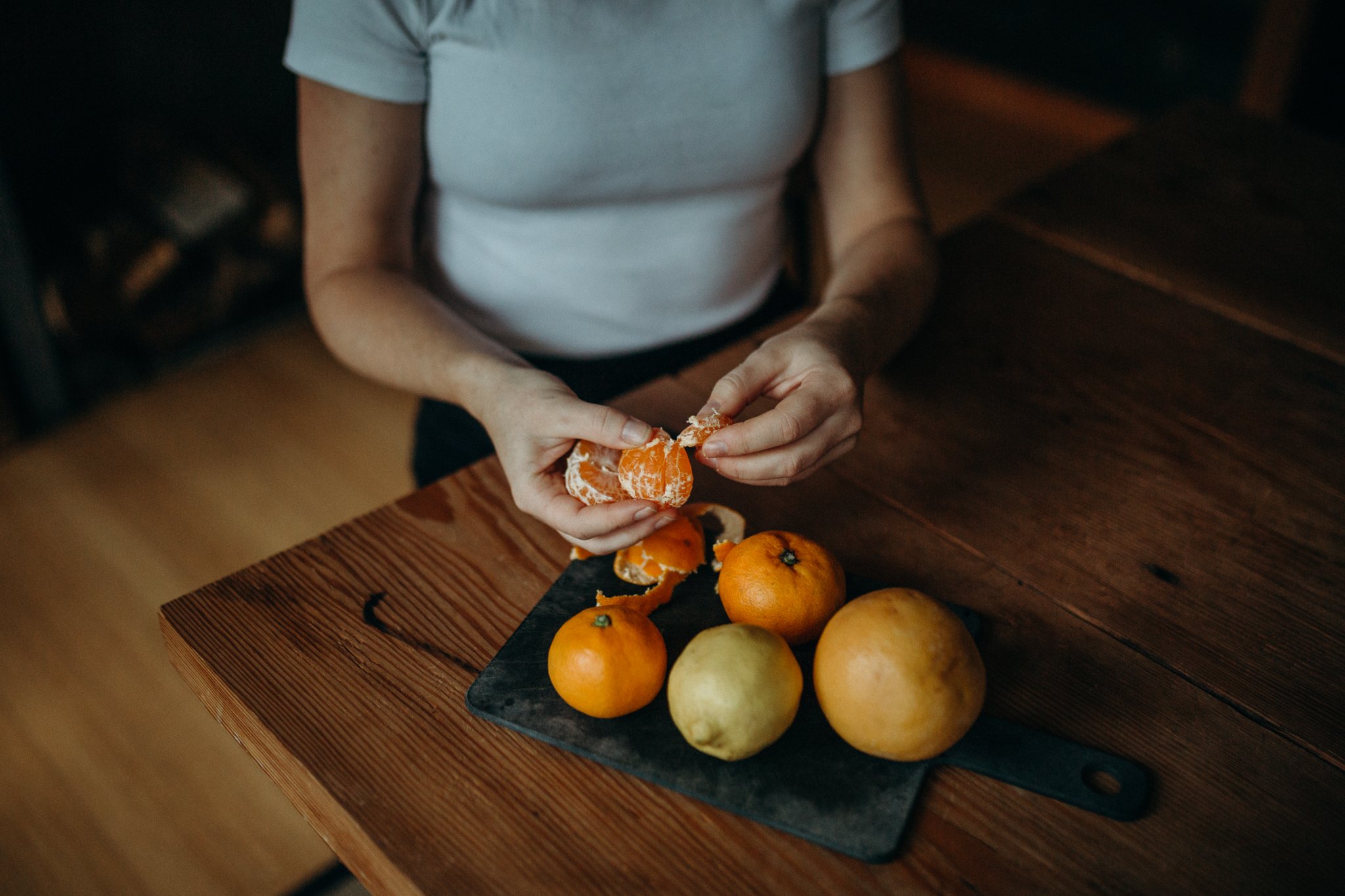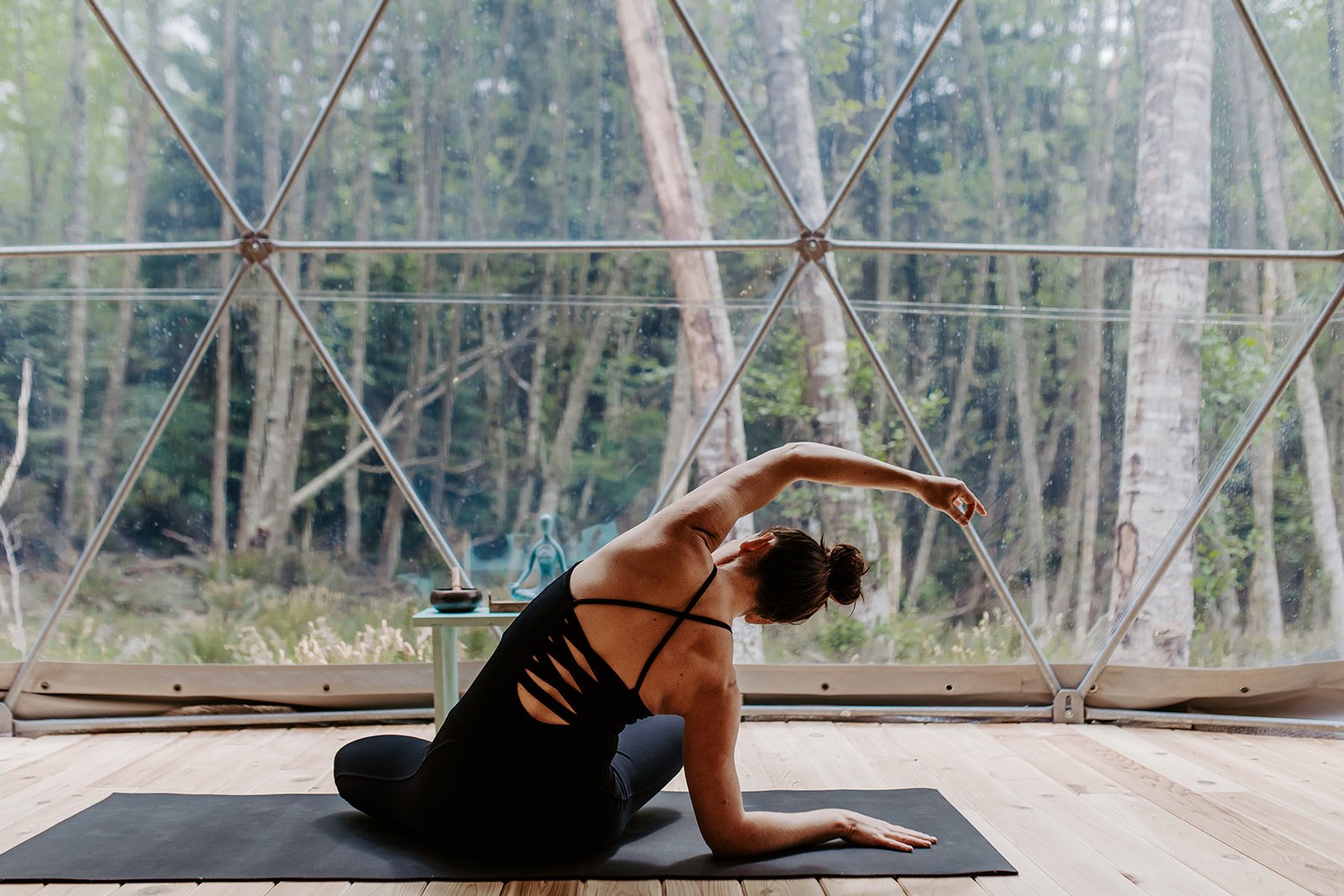In the darker seasons we find ourselves moving through, many of us have adopted a Yin-style pace in sync with the natural elements around us.
The time to study and absorb is now, all things from knowledge to energy, from skill to instinct, now is the time to take stock and take everything in.
In this blog we are delving into the origins of the Chakra system, what it is, how many Chakras there are, the benefits to being open + balanced, and how to release any blocks you might find using movement and food.
The Sanskrit word “chakra” in English translates to “wheel” or disk and refers to the energy centers within your body. Each of these wheels of energy correlate with different parts of the body, including specific organs and nerve bundles.
The chakra system originates in India, sometime between 1500 to 500 BC in Yoga’s sacred texts, called the Vedas. More of the Chakra System and its’ origins are also found in several of the Upanishads, specifically: the Shri Jabala Darshana Upanishad, the Yoga-Shikka Upanishad, the Cudamini Upanishad, and the Shandilya Upanishad.
Written in the 2nd Century and one of the oldest yoga texts, is Pantajali’s Yoga Sutras, which describes the details + depths of the 8 limbs of yoga; a system of guidelines on how to live mindfully and with purpose. We are going to delve into the limbs of Asana + Pranayama in particular, which offer practices to balance your chakras.
When a chakra is unbalanced or blocked, you may experience both physical and emotional symptoms relating to that particular energy center. You may also find difficulty in expressing the particular qualities associated with that chakra if its’ energy isn’t open and flowing.
According to the yogic system, everyone has seven chakras, running from the crown of the head, along the spine all the way to the base. Below you’ll find a breakdown of each energy center and how to keep it balanced through movement and dietary nourishment, including special recipes curated by Tiffany of Parsnips + Pastries
Root Chakra | Muladhara | Red
Found at the base of the spine, this chakra is responsible for your sense of safely. The word Muladhara breaks down into two Sanskrit words: Mula translating to “root” and Adhara, which means “base” or “support.”
Physically this chakra is linked to the tailbone, sciatica nerve, large intestine, adrenal glands, legs, and bottoms of the feet. The formative years of our lives largely affect the health of the root chakra.
A balanced Root Chakra is the equivalent of creating a sturdy foundation to build a house upon, offering peace of mind that you’re safe. Ensuring that your basic needs in life are being met, such as shelter, food, water, security + stability (both physically and emotionally) will aid in keeping your Muladhara Chakra open and functioning at its highest potential.
Yoga Asana To Aid In Balancing Muladhara:
Pavanamuktasana; knee to chest pose
Janu Sirsasana; head to knee pose
Malasana; squat pose
Balasana; child’s pose
Recipes To Try:
“To balance your first chakra, think red. Red apples, beets, tomatoes, pomegranates, strawberries, and raspberries. Also add root vegetables to your diet. Root vegetables grow beneath the ground, absorbing a high amount of vitamins and nutrients from the soil and are rich in folate, vitamin C, antioxidants, and beta-carotene. The healthiest root vegetables include sweet potatoes, carrots, turnips, beets, garlic, parsnips, onions, rutabaga, ginger, and turmeric. Also include protein-rich foods such as eggs, beans, nuts, and lean meats, in addition to spices such as paprika, cayenne, and horseradish.” - Tiffany via Parsnips + Pastries
Crystals To Work With:
Jasper
Onyx
Bloodstone
Garnet
Obsidian
Sacral Chakra | Svadhishthana | Orange
Located just below your naval, the Svadhishthana Chakra governs an individual’s creativity, sexual expression, joy and pleasures. Translated to English, “Svadhishthana” means “where your being is established.”
Physically this chakra is found near the perineum and influences the functions of your reproductive organs, the kidneys, and bladder.
When this chakra is overstimulated you may feel some strong emotional highs and lows. When blocked, feelings of detachment from your surroundings and community often take over - leaving you feeling anxious and lonely.
A balanced and open Sacral Chakra improves your emotional health, strengthens your intuition and can increase your creative expressions. Fear is the primary emotion that can block the Svadhishthana energy center, so finding resources to manage your expectations and emotions in unknown situations can be a powerful tool in keeping this chakra open.
Yoga Asana To Aid In Balancing Svadhishthana:
Utkata Konasana; goddess pose
Paschimottanasana; seated forward bend
Viparita Virabhadrasana; reverse warrior pose
Supta Baddha Konasana; reclined bound ankle pose
Recipes To Try:
“Balance your Sacral Chakra with all things orange. Think carrots, mango, oranges, orange peppers, peaches, apricots, and sweet potatoes. Foods rich in Omega-3s, such as salmon, also work well to balance this chakra. Nuts and seeds such as flax, almonds, walnuts, and sesame provide additional fatty Omega-3s, which aid in cardiovascular health and reduce inflammation. Also stock up on coconut and spices such as cinnamon. Since this chakra’s element is water, stay hydrated and drink plenty of water, coconut water, or herbal teas.” - Tiffany via Parsnips + Pastries
Crystals To Work With:
Orange Calcite
Carnelian
Sunstone
Peach Adventurine
Citrine
Solar Plexus Chakra | Manipura | Yellow
Sitting between the naval and the breastbone, this chakra is known as the seat of your power. All confidence stems from this energy centre, which when overstimulated, can result in a battle with your own ego. When blocked, you may feel stagnant, short-tempered or even somewhat feeble.
Directly translated, Manipura means “city of jewels”: “Mani” translating to “jewels” and “Pura” meaning “place” or “city”
Your Manipura Chakra is physically linked to your stomach, gallbladder, intestines, spleen, pancreas and liver - many parts relating to physically being nourished, digesting, removing toxicities and promoting vitality.
Acting as the body’s energetic power-house and associated with the element of fire, Manipura is directly connected to your sense of self. When energy moves freely through this chakra, you feel empowered with a sense of purpose and strong personal identity within the world.
Yoga Asana To Aid In Balancing Manipura:
Parvritta Trikonasana; revolved triangle pose
Dhanurasana; bow pose
Bhujangasana; cobra pose
Recipes To Try:
“Like the chakra’s color, think yellow when it comes to balancing your solar plexus. Bananas, pineapple, corn, lemons, and yellow curry are all good choices. (Bonus: Yellow is a natural mood enhancer). Also feed this chakra with complex carbohydrates and whole grains such as oats, brown rice, spelt, rye, farro, beans, vegetables, and sprouted grains. These foods provide crucial fiber and sustainable energy.” - Tiffany via Parsnips + Pastries
Crystals To Work With:
Yellow Topaz
Amber
Pyrite
Lemon Quartz
Tiger’s Eye
Heart Chakra | Anahata | Green
The Heart Chakra is located in the midpoint of the spine, near your heart. This chakra is the control-center of love, forgiveness, empathy and compassion. The Anahata Chakra being the fourth of seven chakras acts as a bridge between the earth and spirit elements of the body.
In English “Anahata” means “the unstruck chord,” symbolizing the time before the heart ever experienced hurt. When completely balanced, you’ll experience emotions on a deeper level, with greater perspective, as well as an abundance of consistent happiness, belonging, optimism and gratitude.
When the heart chakra is overstimulated you may find yourself reacting to situations out of jealousy, relying on others for personal fulfillment and seeking unhealthy validation from others. If blocked, you may experience heavy feelings of depression, bitterness or loneliness, which is why it is paramount to keep the Anahata Chakra open and balanced so you’re following your life path with your heart.
Your Anahata Chakra is physically related to the body’s heart and lungs, as well as the circulatory system. It also manages the thymus gland, which controls the immune system. Thus, taking care of your heart chakra generally equates to having a healthier immune system.
Yoga Asana To Aid In Balancing Anahata:
Camatkarasana wild thing pose
Bhujangasana; cobra pose
Ustrasana; camel pose
Setubandha Sarvangasana; bridge pose
Recipes To Try:
“Balance your Heart Chakra with green, raw foods. Organic greens can help greatly with energy and stress and provide our bodies with whole, balanced nutrients. These foods are essential in balancing the fourth chakra. Drink fresh green juice, make a salad, or start your day with a green smoothie. Leafy and cruciferous vegetables are especially healthy, as we know. Heal and balance your heart chakra with kale, broccoli, spinach, chard, dandelion greens, parsley, celery, cucumber, zucchini, matcha, green tea, avocado, lime, mint, peas, kiwi, peas, spirulina, green apples, etc. ” - Tiffany via Parsnips + Pastries
Crystals To Work With:
Rose Quartz
Jade
Green calcite
Amazonite
Emerald
Throat Chakra | Vishuddha | Blue
Adequately named, the Vishuddha Chakra is found at the point of your spine level with your throat. This is the energy center that manages your communication and self-expression.
Physically the throat chakra is connected to the respiratory system, thyroid gland, and all areas inside the month, including your tongue and teeth.
When blocked, you may find yourself having trouble speaking your truth and setting healthy boundaries. Your creativity may also be simultaneously blocked. An overactive Throat Chakra may get you into some hot water with those around you, as this tends to lead you to be overly critical of yourself and others.
Finding balance and opening this energy wheel to spin at a healthy pace will allow you to express yourself without anxiety or overthinking, while your natural creativity juices flow in abundance.
Yoga Asana To Aid In Balancing Vishuddha:
Halasana; plow pose
Matsyasana; fish pose
Salamba Sarvangasana; shoulderstand
Marjaryasana and Bitilasana; cat + cow poses
Recipes To Try:
“Balance your fifth chakra with blue foods. Blueberries and blackberries are particularly good sources of fiber, antioxidants, and vitamins. For the throat chakra, think healing and soothing foods and liquids such as coconut water, herbal teas, raw honey, and lemon. Fruit that grows on trees such as apples, pears, and plums are also known to be excellent at healing this chakra. - Tiffany via Parsnips + Pastries
Crystals To Work With:
Aquamarine
Adventurine
Turquoise
Lapis lazuli
Blue lace agate
Third Eye Chakra | Ajna | Dark Blue or Purple
Sitting right at the brow line, the Ajna Chakra is linked to your perception and awareness, as well as spiritual communication.
On a physical level, the Ajna Chakra governs the skull, the nervous system, the brain, eyes, pituitary and pineal glands. If this chakra is overstimulated or blocked, you may find yourself feeling overwhelmed, having trouble staying level headed or processing information, as well as disoriented.
When the Third Eye Chakra is balanced your subconscious mind works and connects with clarity, linking you to messages from higher consciousness or other dimensions of consciousness, as well as heightening your intuition.
Yoga Asana To Aid In Balancing Ajna:
Baddha Virabhadrasana; humble warrior pose
Prasarita Padottanasana; wide-legged forward bend
Virabhadrasana 1; warrior 1 pose
Catur Svanasana; dolphin pose
Recipes To Try:
“For this chakra, think [dark hues of blue and] purple. Purple grapes, purple kale, blueberries, purple cabbage, eggplant, and purple carrots. Also include cacao, which is rich in flavonoids and boosts serotonin, which helps to relieve stress and inflammation. These “brain foods” can instantly help clear an overworked mind and help to regain focus.” - Tiffany via Parsnips + Pastries
Crystals To Work With:
Sodalite
Amethyst
Lepidolite
Labradorite
Azurite
Kyanite
Crown Chakra | Sahasrara | Purple or White
Located just above the crown of the head, the Sahasrara Chakra translates to “the bridge of the cosmos,” and is the most spiritually-driven of all seven chakras. The Crown, or Sahasrara Chakra, acts as your center for universal consciousness, spirit, enlightenment and link to higher consciousness.
In the physical body it’s linked to the central nervous system as well as the pineal gland. The crown chakra governs the top of the spinal cord, brain stem, nerve endings and pain centers.
When blocked, you may experience varying degrees of dissociation and disconnection from aspects of the world and people around you.
A balanced Crown Chakra allows for you to tap into all wisdom as you’re exposed to, consciously or not. You may also experience a heightened level of peace or calm while feeling a deeper connection to those around you.
Yoga Asana To Aid In Balancing Sahasrara:
Sasangasana; rabbit pose
Makarasana; crocodile post
Gomukhasana; cow face pose
Vrksasana; tree pose
Recipes To Try:
“The Crown Chakra focuses more on fasting and detoxing than it does on food. It focuses more on the spiritual aspect of our bodies, our minds. Detoxing can help our bodies flush out toxins, boost our energy, and clear our mind. Meditation and yoga is an excellent way to strengthen and heal the crown chakra. It can teach us to live mindfully and take some quiet, peaceful time for ourselves amidst our chaotic lives. Meditation herbs or essential oils such as sage, lavender, frankincense, and juniper are wonderful in balancing this chakra.” - Tiffany via Parsnips + Pastries
Crystals To Work With:
Moonstone
White Howlite
Amethyst
Clear Quartz
Selenite
Our chakras are affected by everything we do, consume and expose ourselves to on a daily basis. Putting in effort to maintain them at their best level is a daily practice that will ebb and flow, looking different all throughout your life.
Being aware of as many resources as you can will only aid you in maintaining an open and balanced chakra system.
Sending gratitude and credit to the writers of Yoga Journal for all their helpful articles, particularly Mara Carrico for her overview shared of the 8 Limbs of Yoga, and Tiffany @parsnipsandpastries for all dietary breakdowns + recipes shared. As well as to the many talented photographers we work with - including Jenna Pullen + Jeanie Ow
And big thanks to you, our community, both for taking the time to explore our new blog and for walking the path to your best self - we hope this resonated and aids you in nourishing your body over the months and years to come.
All Photos - Nectar Yoga Copyright


